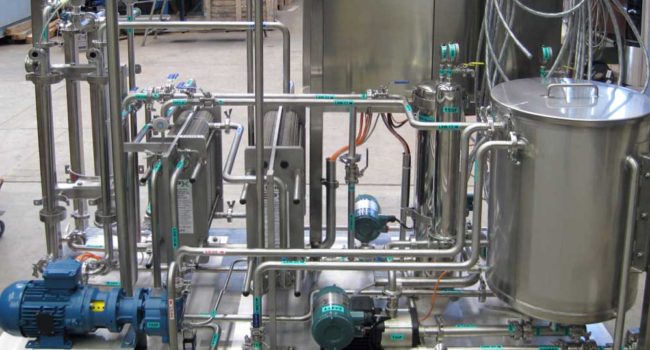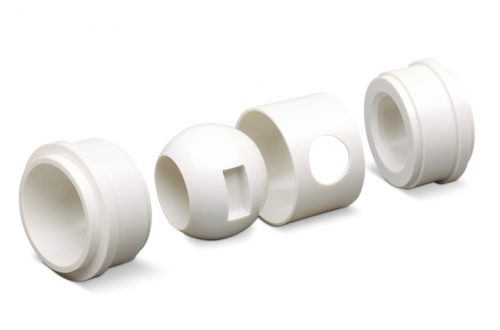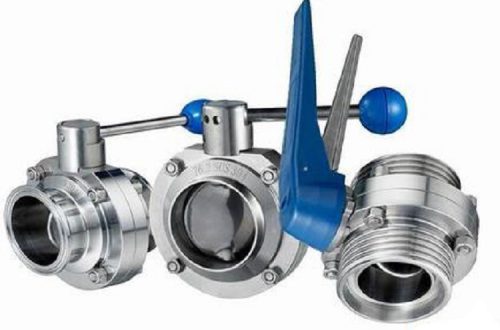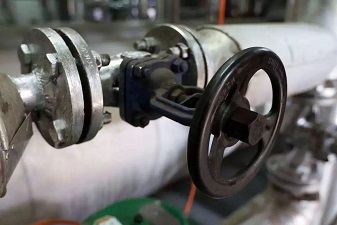Sanitary fittings were well developed and are widely used because they are cleanable; either by dismantling a system and manually cleaning it or using a CIP (clean in place) process. They limit entrapment areas where bacteria could form or harbor. They are also corrosion resistant.
Additionally, sanitary fittings do not contain any pockets, threading, or tight bends. This design specification is meant to eliminate the areas that are difficult to clean.
Occasionally materials being processed will interact with stainless steel, potentially causing them to corrode and eventually fail. For this reason, sanitary fittings are available in specific stainless steel alloys to make sure they can handle more demanding processing environments.
Sanitary Fittings Assembly
Sanitary fittings are connected to each other in either of two methods: butt-welding or tri-clamp connections. Tri-Clamp connections are assembled by mating two flanged end together with a gasket that fits into the face of both ends. A clamp is then used to secure the two ends in order to create a leak-proof connection between the two process lines.
Sanitary Fittings Stainless Steel Alloys
Sanitary fittings are available in two different stainless steel alloys, 304 and 316. All stainless steel products contain a mixture of elements including chromium, nickel, carbon, and manganese. The most common alloy is 304 which is used in a variety of applications for its durability, appearance, and resistance to corrosion. However, situations involving acidic material, industrial solvents, or highly concentrated saline environments can cause corrosion and eventual failure of this material.
316 stainless steel has the same chemical composition as 304 coupled with another element, molybdenum. This addition turns common stainless steel into a more resilient product with the ability to withstand harsh environments.
Surface Finish & Roughness Average (Ra)
One of the most distinguishing features of all sanitary fittings is the surface finish, most commonly referred to as Roughness Average (Ra). At a microscopic level, stainless steel has peaks and valleys that can harbor bacteria throughout the production cycle. Sanitary fittings are polished to a point where the peaks and valleys are minimized or in some cases eliminated. The lower the roughness average the smoother the surface.
The standard roughness average for sanitary fittings is 32Ra. This is for both the inside and outside of the fittings. Bio-Pharmaceutical, or BPE fittings, require a smoother finish than standard food-grade fittings. The roughness average for BPE fittings is either 20Ra or 15Ra. BPE fittings with a roughness average of 15Ra typically include electropolishing finish to remove any traces of stray metallic particles that may interfere with the processing of pharmaceutical products.
3A Certification
In order for a stainless steel fitting to be deemed “sanitary” in the United States, it must adhere to 3A Sanitary Standards. Adamant Valves Corporation is an independent, not-for-profit corporation dedicated to advancing hygienic equipment design for the food, beverage, and pharmaceutical industries. We represent the interests of three stakeholder groups with a common commitment to promoting food safety and the public health — regulatory sanitarians, equipment fabricators and processors.
Products used in the manufacturing of sanitary processes will typically be stamped/etched with the 3A logo seen here. 3A certification is on the manufacturer by manufacturer basis. In order to stamp sanitary fittings with the 3A logo, a manufacturer must apply for a license and have their manufacturing process and products inspected and approved by the organization.






One Comment
Pingback: